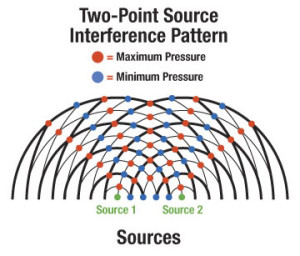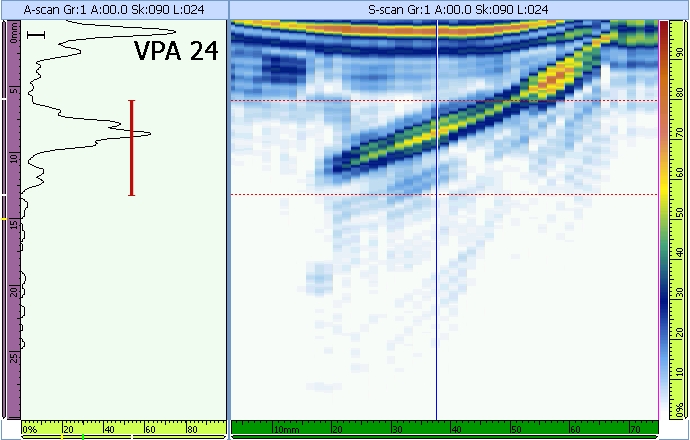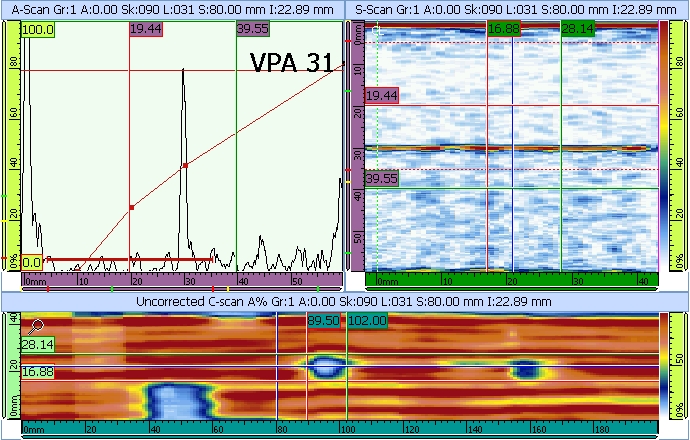Phased Array e C-SCAN
 In wave theory, a phased array is a group of antennas in which the relative phases of the respective signals feeding the antennas are varied in such a way that the effective radiation pattern of the array is reinforced in a desired direction and suppressed in undesired directions.
In wave theory, a phased array is a group of antennas in which the relative phases of the respective signals feeding the antennas are varied in such a way that the effective radiation pattern of the array is reinforced in a desired direction and suppressed in undesired directions.
The principle of constructive and destructive interaction of waves was demonstrated by English scientist Thomas Young in 1801 in a notable experiment that utilized two point sources of light to create interference patterns. Waves that combine in phase reinforce each other, while waves that combine out-of-phase will cancel each other.
Phase shifting, or phasing, is in turn a way of controlling these interactions by time-shifting wave fronts that originate from two or more sources. It can be used to bend, steer, or focus the energy of a wave front.
Initially, the use of ultrasonic phased array systems was largely confined to the medical field.
An array transducer is simply one that contains a number of separate elements in a single housing, and phasing refers to how those elements are sequentially pulsed. A phased array system is normally based around a specialized ultrasonic transducer that contains many individual elements (typically from 16 to 256) that can be pulsed separately in a programmed pattern.
Phased array systems pulse and receive from multiple elements of an array. These elements are pulsed in such a way as to cause multiple beam components to combine with each other and form a single wave front traveling in the desired direction. Similarly, the receiver function combines the input from multiple elements into a single presentation
Advantages of Phased Array:
- Software control of beam angle, focal distance, and beam spot size. These parameters can be dynamically scanned at each inspection point to optimize incident angle and signal-to-noise for each part geometry.
- Multiple-angle inspection can be performed with a single, small, multi-element probe and wedge, offering either single fixed angles or a scan through a range of angles.
- These capabilities provide greater flexibility for inspection of complex geometries and tests in which part geometry limits access.
- Multiplexing across many elements allows motionless high-speed scans from a single transducer position. More than one scan may be performed from a single location with various inspection angles.
- Electronic scanning across many groups of elements allows for C-Scan images to be produced very rapidly.



